#Pacific gopher snake
Explore tagged Tumblr posts
Text
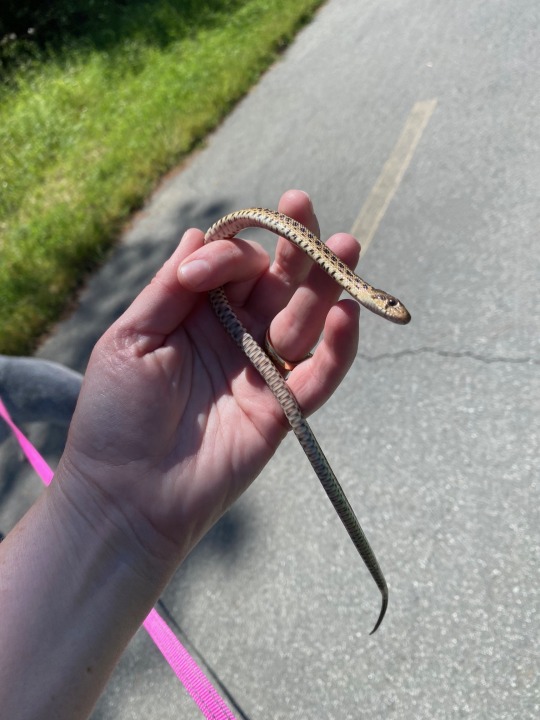

I went for a hike with one of my favorite humans today and found this little darling sunning themselves on a popular trail. I decided to move them off the path as there were a LOT of bikes whizzing by, and they were so polite! No hissing, no musking, no bites!
@snake-spotted I thought you'd appreciate my new friend too!
215 notes
·
View notes
Text


#nature video#pacific gopher snake#pituophis catenifer catenifer#snakes#reptiles#wildlife#sveadal#uvas canyon#video
18 notes
·
View notes
Text



Gopher snake shed that’s longer than I am tall :3
26 notes
·
View notes
Text
Basically no one is selling non-albino gopher snakes and it's driving me crazy
Does anyone know any place to buy gopher snakes that isnt morphmarket or find your reptile
#also theyre ALL babies#pacific gopher snake is the kind we want bc its gonna be our museum ambassador and we want a snake who will look like the local ones#still daydreaming about that wild gopher snake from last week who just let me carry her around. u wouldve been perfect.#i hope u have a good life out there.#anyways. its not important now bc we havent heard back about grant money#but ive been keeping an eye on the market. what little there is of it#bull snake is ok ig but we dont necessarily want one that big uk#and it HAS to have the mask marking#augh.
1 note
·
View note
Text

Pacific Gopher Snake (Pituophis c. catenifer), family Colubridae, Joshua Tree National Park, CA, USA
photograph by Carmen Aurrecoechea | NPS
215 notes
·
View notes
Text
14 notes
·
View notes
Text

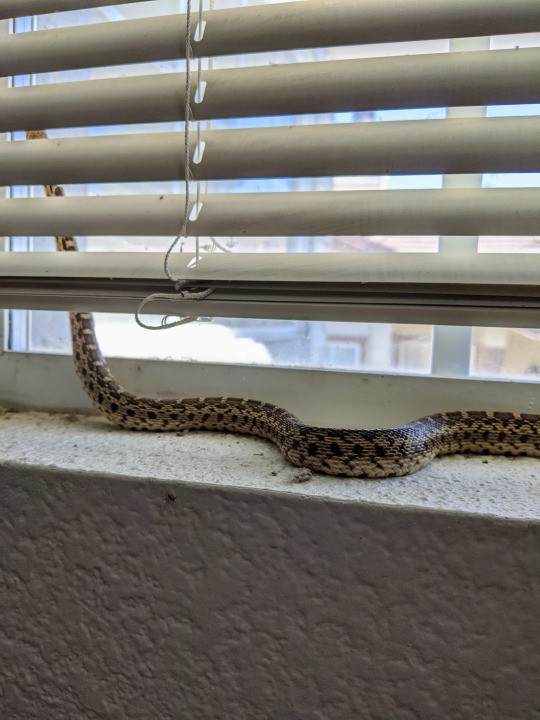
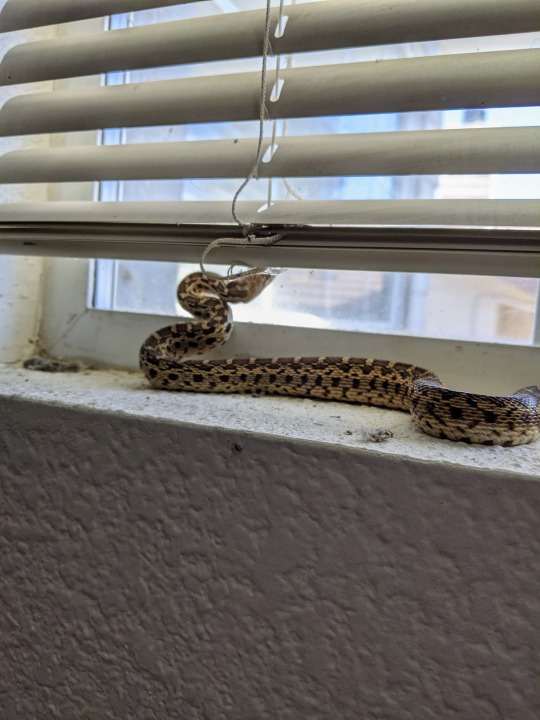
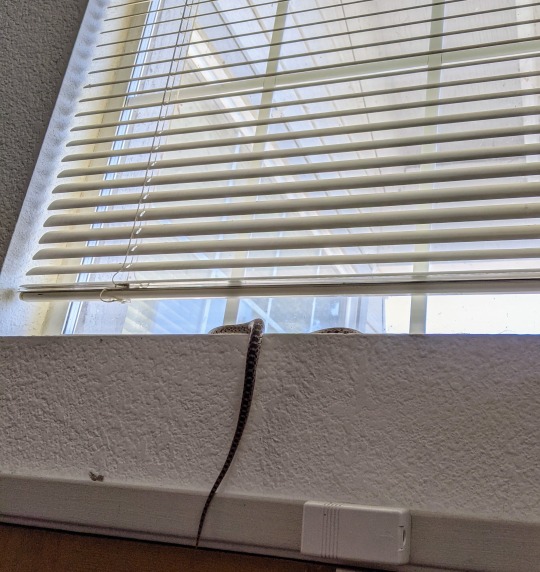

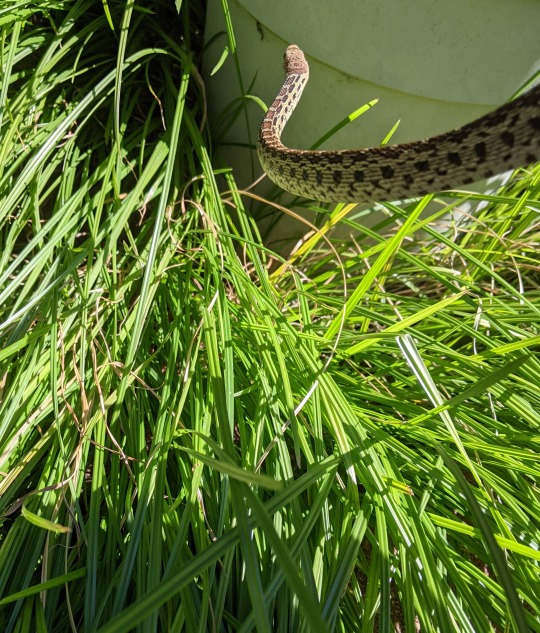
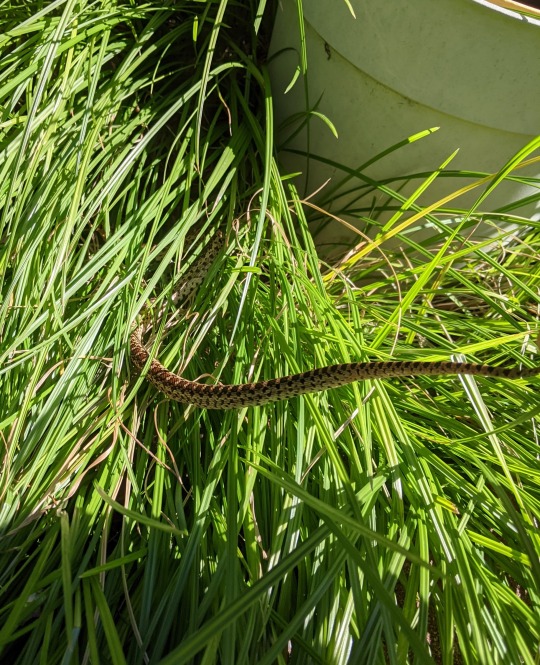
We heard a small commotion at the front door today and looked up to find a little friend scaling the blinds in the window.
This isn't an escaped pet, but a wild gopher snake who slipped through the gap under the screen door and proceeded to explore my house!
They were a bit hissy and fussy, so I didn't get many decent photos, but they were politely relocated to the yard where they came from.
Thanks for visiting, little bud!
#put that thing back where it came from or so help me#so help me!#snake#snakes#reptile#reptiles#reptiblr#pacific gopher snake#gopher snakes#gopher snake#wild animal#wild animals#wild snake
140 notes
·
View notes
Text





10 notes
·
View notes
Text






These are the worst pics ever but that four leaf really was lucky! I saw a pacific gopher snake today!
11 notes
·
View notes
Photo

I found a beautiful snake shed in my back yard today! I’m pretty darn sure that it’s a gopher snake skin, but I’m bringing it to my ecology professor to verify. Pacific gopher snakes have similar coloring to Mojave Desert native rattlesnakes, and their markings often get them mistaken for a rattlesnake. The biggest difference: gopher snakes have square blocks that form stripes and rattlesnakes have the telltale diamond pattern along their back. It doesn’t look much like my rattlesnake skin, but it’s always better to double check!
10 notes
·
View notes
Text
Exactly how I feel thank you
While water moccasins are extremely deadly snakes don't like using their venom because they need it to eat and it requires a lot of energy to refill venom sacks
They only bite if provoked and harassed snakes are cool
Someone stomped a pacific gopher snakes head that I found on a walk and I am really upset about it they are non venomous and beautiful snakes Mt heart hurts
If you kill an innocent snake you are a piece of shit and I have no love for you
33 notes
·
View notes
Photo
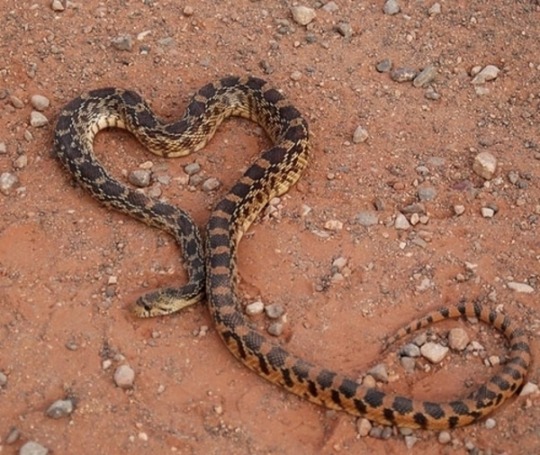
Pacific Gopher Snake. West Coast U.S.
5 notes
·
View notes
Text
no drug can compare to the absolute rush of someone asking you for snake ID and you immediately know what it is
#it was a west coast snake and i STILL got it right#i double checked with my field guide#i mean i didn't get the subspecies but like lmao there's no way i would've known that#it was a pacific gopher snake!!
3 notes
·
View notes
Photo
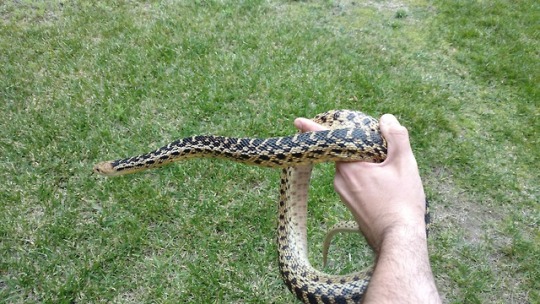


Went to do some work out in the yard and just about stepped on this big gopher snake on the hill. It was happy to slither home once I had finished up. Pretty cold today but it minded its manners and only hissed at me a little bit. May 23, 2018
#reptiblr#snake#snakes#reptile#reptiles#gopher#gopher snake#pituophis#catenifer#annectens#colubridae#colubrid#california#pacific
29 notes
·
View notes
Note

could u please help me identify whose mans this is? i accidentally stepped on them in my backyard a few years back but ur wild snake pic reminded me i never figured out what kind of snake they were
that's a beautiful gopher snake! i'm no snake expert, but i'm guessing this fellow is a pacific gopher snake--- it's possible that he's a bullsnake. I'm not good at distinguishing between the sub-species. They're not venomous and mostly eat gophers. They're not known for being aggressive, although i've had a few snap at me. It's more common for them to fake-rattle. They try to mimic rattlesnakes. Since they don't have proper rattles, they have to shake their tail against dead leaves, sticks, and dirt. They're just doing their best.
91 notes
·
View notes
Text
California’s Indigenous Snakes
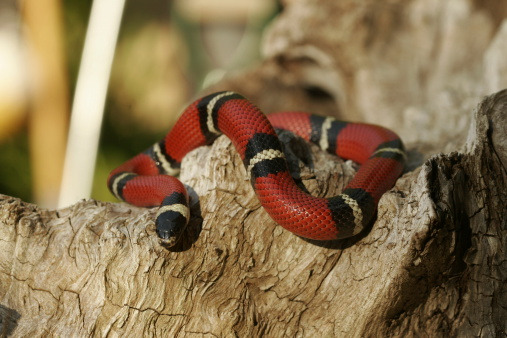
California is home to dozens of snake varieties, including several venomous species. Identifying the region’s snakes requires knowledge of their appearance and natural habitat. Many California snakes are not endangered, and some varieties are popular household pets. The California mountain kingsnake is a banded and nonvenomous variety found across the state. Kingsnakes gained their name from their ability to eat other snakes. They live in varying ecosystems and eat a variety of small reptiles and mammals. Domesticated kingsnakes eat mice. These snakes reach up to 4 feet in length and live up to 15 years. Due to their tail rattling when threatened, they often are mistaken for rattlesnakes. Kingsnakes have muted coloration, such as brown and cream or black and yellow. However, domestic breeding practices have resulted in striking color patterns, including bright orange. The coachwhip is another snake breed commonly found in California. These snakes prefer hot, dry landscapes, so they are commonly found in the desert. Coachwhips have a speckled appearance and often come in shades of red, silver, and tan, with flecks of black. The snakes are easily recognized by their tails, which are tightly coiled and tapered. Coachwhips are common sights on roadways on sunny days. The snakes bite if aggravated but are not aggressive or venomous. The Pacific gopher snake, named for its propensity to consume rodents, can imitate a rattlesnake when on the defensive. Its markings also are similar to the diamond pattern on rattlesnakes. However, gopher snakes are noticeably thinner with more reflective scales. These snakes have adapted well to humans and can be found in gardens and other habitats. They can grow up to 5 feet long and live up to 20 years in captivity. The Northern Pacific rattlesnake is a venomous snake common in the Northwest. Its patterns are dull and earth-toned for better camouflage. These snakes can live up to three decades. Unlike the gopher snake and coachwhip, Northern Pacific rattlesnakes are nocturnal. Instead, they hunt rodents and smaller reptiles. Rattlesnakes live in a variety of habitats, from deserts to grasslands and forests. They are best known for the rattling sound they make by vibrating the end of their tails. The snake's rattle gains a new layer each time it sheds its skin. The rattles eventually can break off, so a rattle’s length is not accurately indicating the snake’s age. Although rattlesnakes are not endangered, they often are killed unnecessarily due to their frightening reputation. While rattlesnakes are venomous, they are not aggressive. Rattlesnake bites are medical emergencies but rarely fatal. The best way to avoid a rattlesnake bite is to stay clear of the snake’s vicinity since its striking distance is usually less than 2 feet. Three of the eight reptiles on California's endangered species list are snakes. The worm-line Southern Rubber Boa is only found around the mountains of San Bernardino and San Jacinto. It lives in forested areas where it can find natural hiding spots amongst dead logs. The Alameda Striped Racer is mostly found in Central California. It is patterned with bold bright yellow and orange stripes. While racers are not poisonous, they become aggressive if threatened. Finally, Giant Garter Snakes make their home in wetlands and rice fields. As their name suggests, they are much larger than the average garter snake and can grow more than five feet long.
1 note
·
View note